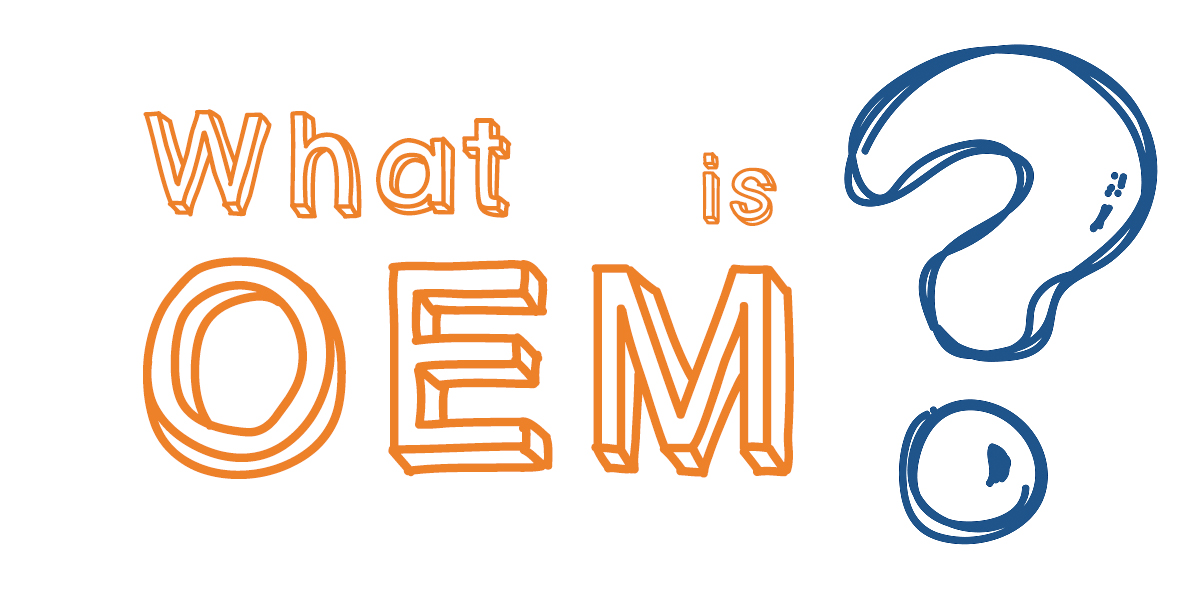With the expansion of the global skin care products market, more and more skin care brands have been born. Most of the skin care brands are produced from OEM factories. What is OEM? The form of skin care products made is divided into Private label, OEM, and ODM. You who are preparing to engage in the skin care industry, have got yourself well-known about Private label, OEM, and ODM? Which form is suitable for you to start your skin care brand? What are the differences between them? This article aims to let you fully understand their commonalities and differences, advantages and disadvantages, to get your brand started and be powerful!
- What is Private Label?
- What are the advantages of Private Label?
- What are the disadvantages of Private Label?
- What is OEM?
- | What are the advantages of OEM?
- What are the disadvantages of OEM?
- What is ODM?
- What are advantages of ODM?
- What are disadvantages of ODM?
- What are the similarities between them?
- What are the differences between them?
What is Private Label?
That is, Private label skin care products are skin care products that are produced by a manufacturer, then relabeled and sold to businesses for resale to retail customers. Skin care product brand gets their products produced by a third party but sells under their own brand name. And they control everything about products, that includes the specs of the product, how it is packed, and everything else besides. The design of products, raw materials, packaging, brand ownership, as well as the brand’s own labels, all belong to this original brand, the factory just plays a role in manufacturing. Similar to EsteeLauder, which is a manufacturer and marketer of premium skin care, cosmetics, fragrances, and hair care products; Unilever is the world’s largest producer and manufacturer of soaps; Shiseido, which is also Japan’s largest cosmetics company. They all design their own products and sell products in their channels.
What kind of brand is suitable to operate by Private label?
This is a tricky question because no newly established brand can achieve the private label model overnight, have its own factory, and integrate the three main entities of design, production, and sales. Many brands start from a young age and then start their own private labels after they grow and develop. This does not rule out that some big brands want to expand their product categories and have a strong financial base and a sound system. In this case, they can also start their own private label form.
What are the advantages of Private Label?
1. It allows you to design products that better match your brand image and make your products unique.
2. Ensure product quality and control the production process.
3. Control costs and have market competitive advantages.
4. It can define the brand’s consumer groups and better establish the brand image.
What are the disadvantages of Private Label?
1. It takes longer. When it comes to colors, designs, and even the names of your products, this process may take more time and effort. It may affect your sale timescale if there is any delay in production.
2. This product belongs only to you and cannot appear in other stores. To some extent, it is difficulty building brand loyalty. It can be a struggle to build significant brand loyalty. Your private label lines, after all, often compete with established.
What is OEM?
OEM is the abbreviation of Original Equipment Manufacturer in English, also known as fixed-point production, commonly known as OEM (production). The basic meaning is that skin care brand owners do not directly produce their own brand, but entrust skin care manufacturers to produce their brand products, which is a popular production method in the modern skin care industry. To put it simply, Party A takes a fancy to Party B’s production capacity and asks Party B to produce products designed by Party A and use Party A’s trademark. For Party B, this is called OEM. Nivea, Avon, Mentholatum, Innisfree, Watsons, Pomeranian, Yo Lai, Nature Hall, Hanhou, etc. are all OEM brands. OEM manufacturers are responsible for production but are not involved in design, sales, etc.
What kind of brand is suitable to be operated in OEM?
It is suitable for buyers who have registered brand trademarks and have completed planning and design. They only need to entrust the skin care products factory to provide us with formula development and production packaging. It can be said that OEM is suitable for brands that have certain experiences, and certain scales, and are relatively mature in design, research and development, and sales.
 |
|
What are the advantages of OEM?
1. Reduce investment cost and investment risk. On the one hand, the existence of OEM factories directly saves the cost of repeated investment in building factories and purchasing equipment for skin care brands. Compared with building our own production and sales system, the cost is greatly reduced. On the other hand, the market is changing all the time, some skin care product owners often use trial and error to enter the market, and they all choose the OEM method to test the possibility of entering the market.
2. The product creation model is mature. The OEM factory will have a mature process for product development, design, proofing, and mass production. Not only can it ensure that the products are of formal origin and complete relevant qualifications, but also can guarantee product quality through standardized production models and quality control programs.
3. Increase commodity diversity. For a single-brand brand, because its own brand is already very well known and has a certain customer base, the OEM method is also a shortcut if it wants to expand and develop more types of products.
4. Highlight the company’s advantages. The competitive advantage of some brands lies not in their production, but in their various sales channels and perfect after-sales service. At this time, OEM cooperation is almost a win-win method for both parties. Watsons, with its global sales channels and service network, does not need to produce products itself but can provide a reputation for high-quality products to win the trust of customers.
5. Make the brand more competitive. Professional OEM brands control the market trend more macroscopically. According to the trend of popular and mainstream products in the industry,we can provide customers with constructive customized solutions.
What are the disadvantages of OEM?
1. For the brand side, the products produced by OEM companies may have risks such as leaked formulas, poor product quality, and brand reputation.
2, Technical risk. There are many types of quality risks. For example, OEM manufacturers cannot meet the quality standards of the entrusting party, resulting in quality risks; or the quality standards of different countries and regions are different, resulting in quality risks for the same batch of products; Choose inferior materials with lower prices to reduce costs, which will cause quality problems and affect the brand image.
3 Risk of delay. Most OEM manufacturers will manufacture for multiple brands at the same time. If the capacity of the OEM factory is insufficient, the risk of delayed delivery will increase. In addition, the lack of flexibility in OEM production to be processed is also an important reason for the delay risk.
4. Risks faced by economic development. The production cycle of some cosmetics OEMs will be relatively long, and there will be many unpredictable things after ordering. Since the impact of the pandemic, many small OEM companies have directly closed down. Large enterprises with high pressure. In the event of a crisis, all cooperation is risky. As long as there is no particularly large risk, basically, a company with a sound system can deal with it calmly.

What is ODM?
ODM is the abbreviation of Original Design Manufacturer in English. ODM means that A designs a specific product, and the product is attractive to B, and A is required to produce it with B’s brand name, or slightly modify the design for production. A is responsible for the production process, design, production, sales, and after-sales service.
Party A’s technology and design are favored by Party B, and Party B advertises and labels it on Party B. For Party A, this is called ODM. OEM form focuses on production capacity and meets market demand by entrusting the production capacity of cooperative manufacturers
What brands are suitable to operate in ODM?
Suitable for buyers who have registered brands but have not completed planning and design, entrust skin care products’ factories to help buyers with a series of processes such as product planning, packaging design, formula research and development, production, and packaging. In other words, the buyer only needs to be responsible for the sales operation and the expansion of sales channels, which can greatly reduce the research and development time of the buyer.

What are advantages of ODM?
1. ODM is more friendly for newly established skin care product brands, with high return on investment, and cost savings.
2. Save time and cost; Buyers can purchase directly from the skin care products manufacturer without spending too much time in production.
3. All buyers need to consider is how to develop promotion and marketing strategies.
What are disadvantages of ODM?
1. Product limitations. Buyers can only accept products offered by suppliers, there is no customization option, which limits the buyer’s choice to a certain extent. The product that A can buy in B, C can also buy in B.
2. Increased competition in the sales market. This business model will inevitably bring competition with other sellers, even if you don’t want to compete with others.
3. Price transparency. Everyone buys from the same manufacturer, and everyone gets the same price from the manufacturer. You can’t oversell the product, the profit is not that substantial.

What are the similarities between them?
1. All three are involved in the sales of the products. You can manage all the activities of promotion and marketing of products
2. Production operation: Whether it is skin care product OEM or ODM, customers don’t have their own processing factories, but have their own sales channels and ecological chains
3. Product standards: For Private Label and OEM, the specific production standards for customized products are proposed by skin care product buyers, and the skin care product factory will produce them after branders are confirmed.
4. Fee settlement: Manufacturers charge customers fees based on orders, products, services, and agency projects.
What are the differences between them?
1. Risk control. The level of risk taken varies. Private labels bear all the risks themselves, OEM mainly lies in the control of design and manufacturing, ODM focuses on sales.
2. Brand ownership. Private labels have ownership of the products and all products have their labels, and it is joining into production too. In OEM form, OEM buyers hold the ownership of the products too, while cooperative manufacturers mainly play the role of producers; In the ODM form, manufacturers play a leading role in product design and research and development, they have more control over product intellectual property rights.
3. And their concepts are different as above.
When choosing skin care factories, it is advisable to consider those with independent research and development technological capabilities to ensure product quality. Some manufacturers do not have their own research and development teams, and their formulas can only be purchased externally. Products made with this mindset do not possess innovation and differentiation. In the current fiercely competitive skin care environment, whether it is quality, innovation, or price, the priority is to choose factories with research and development teams to produce products. Everything has two sides like a coin. No matter which form you choose, there are pros and cons. From the perspective of processing plants, ODM cooperation is better than OEM. From the perspective of customers, customers feel that the benefits of OEM cooperation are greater than ODM. Choosing ODM or OEM depends on the specific needs of customers and the company’s strategic planning; Choosing an appropriate cooperation model can help skin care brands reduce costs, improve efficiency, enhance market competitiveness, and achieve a win-win situation.




 |
|

